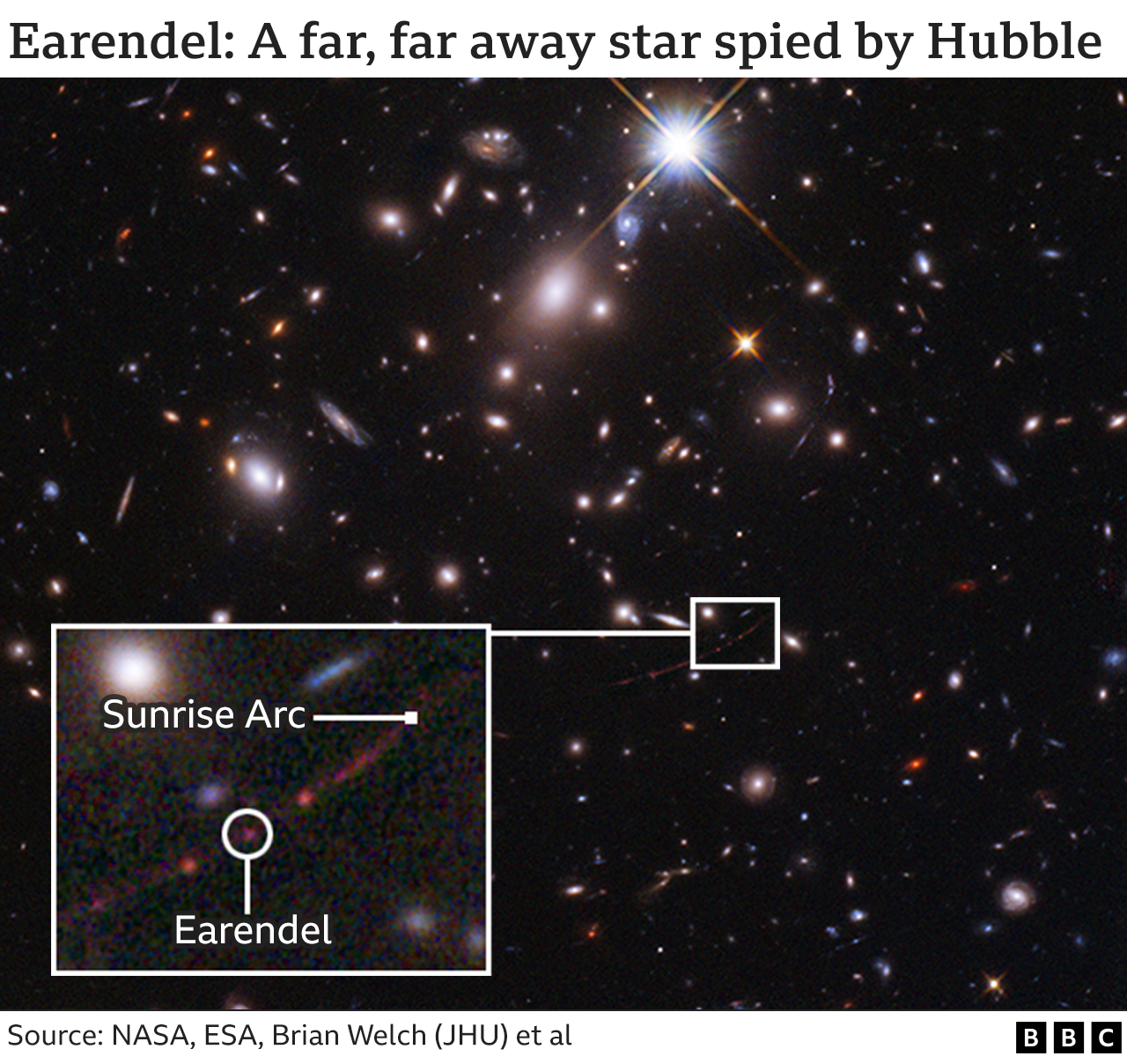Hubble failed?
Message boards :
Science (non-SETI) :
Hubble failed?
Message board moderation
Previous · 1 · 2
| Author | Message |
|---|---|
 Lynn Lynn Send message Joined: 20 Nov 00 Posts: 14162 Credit: 79,603,650 RAC: 123 
|
NASA to announce Hubble Space Telescope discovery next week Officials with the Hubble Space Telescope program have some new science to share on Wednesday (March 30). A NASA statement promises "one for the record books" and an "exciting new observation" from the nearly 32-year-old telescope. It's tricky to guess what that discovery might be, given that the Hubble Space Telescope's work stretches from exoplanets to galaxies to measuring the expansion of the universe. (That last bit garnered the multiobservatory team a Nobel Prize.) https://www.space.com/hubble-space-telescope-observations-announcement-coming |
 Lynn Lynn Send message Joined: 20 Nov 00 Posts: 14162 Credit: 79,603,650 RAC: 123 
|
Hubble: 'Single star' detected at record-breaking distance https://www.bbc.com/news/science-environment-60931100 They've nicknamed it "Earendel" and it's the most distant, single star yet imaged by a telescope. The light from this object has taken 12.9 billion years to reach us. It's at the sort of distance that telescopes normally would only be able to resolve galaxies containing millions of stars. But the Hubble space observatory has picked out Earendel individually by exploiting a natural phenomenon that's akin to using a zoom lens. It's called gravitational lensing and it works like this: If there is a great cluster of galaxies in the line of sight, the gravitational pull from this mass of matter will bend and magnify the light of more distant objects behind. Usually, this is just other galaxies, but in this specific case Earendel was in a sweetspot in the lens effect. They've nicknamed it "Earendel" and it's the most distant, single star yet imaged by a telescope. The light from this object has taken 12.9 billion years to reach us. It's at the sort of distance that telescopes normally would only be able to resolve galaxies containing millions of stars. But the Hubble space observatory has picked out Earendel individually by exploiting a natural phenomenon that's akin to using a zoom lens. It's called gravitational lensing and it works like this: If there is a great cluster of galaxies in the line of sight, the gravitational pull from this mass of matter will bend and magnify the light of more distant objects behind.  |
|
musicplayer Send message Joined: 17 May 10 Posts: 2430 Credit: 926,046 RAC: 0 |
HST - Hubble Space Telescope. |
 Wiggo Wiggo Send message Joined: 24 Jan 00 Posts: 34887 Credit: 261,360,520 RAC: 489 
|
Well it ain't dead yet, but it does have a new rival as comparison shots reveal. Hubble Telescope Captures What Might Be Prettiest Spiral Galaxy Ever.  Meanwhile NASA Traces Supernova Remains Back to the Middle Ages with Hubble, the Spitzer and the Chandra X-Ray Observatory being used.  Cheers. |
 Wiggo Wiggo Send message Joined: 24 Jan 00 Posts: 34887 Credit: 261,360,520 RAC: 489 
|
There maybe a bit more life left in it yet. SpaceX, NASA Study Raising Hubble Telescope to Higher Orbit. NASA said Thursday that it’s working with SpaceX to study using the company’s Dragon spacecraft to boost the space agency’s Hubble Space Telescope into a higher orbit. NASA and SpaceX signed a Space Act Agreement to look into such a flight.Cheers. |
 Wiggo Wiggo Send message Joined: 24 Jan 00 Posts: 34887 Credit: 261,360,520 RAC: 489 
|
NASA Hubble Spots Protective Shield Defending 2 Small Galaxies. Just a space train stop from the Milky Way, two little galaxies have a fortified barricade protecting them from falling to pieces, astronomers said Wednesday in the journal Nature.Cheers. |
 Wiggo Wiggo Send message Joined: 24 Jan 00 Posts: 34887 Credit: 261,360,520 RAC: 489 
|
|
 Wiggo Wiggo Send message Joined: 24 Jan 00 Posts: 34887 Credit: 261,360,520 RAC: 489 
|
More new pics from Hubble. NASA Hubble Telescope Delivers Dazzling New View of Star-Studded Carina Nebula.  Cheers. |
 Wiggo Wiggo Send message Joined: 24 Jan 00 Posts: 34887 Credit: 261,360,520 RAC: 489 
|
Even old pics can reveal new things. Astronomers discover weird crisscrossing jets lurking in 14-year-old Hubble photo.  Cheers. |

©2024 University of California
SETI@home and Astropulse are funded by grants from the National Science Foundation, NASA, and donations from SETI@home volunteers. AstroPulse is funded in part by the NSF through grant AST-0307956.
